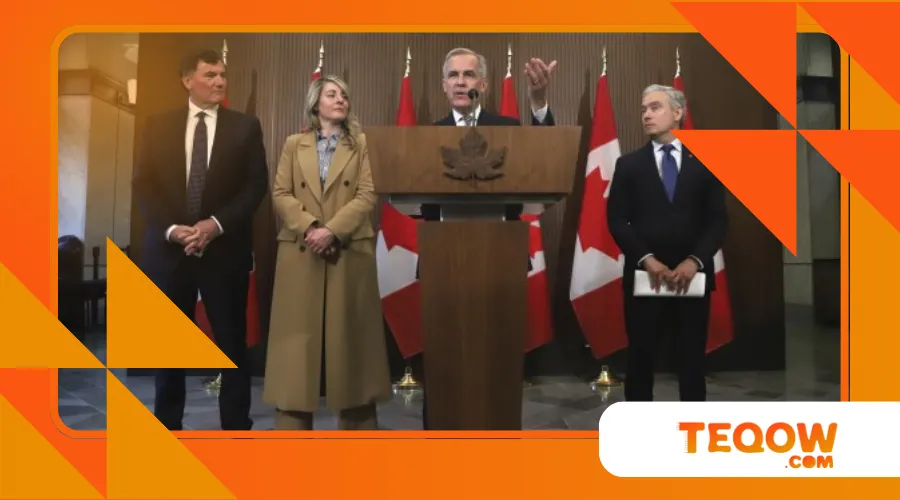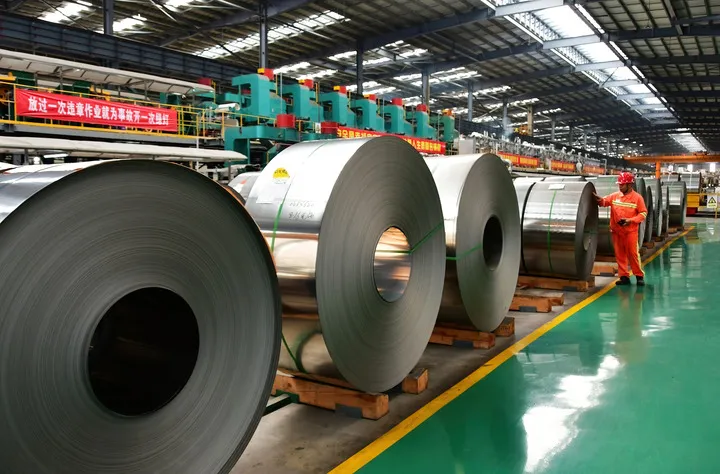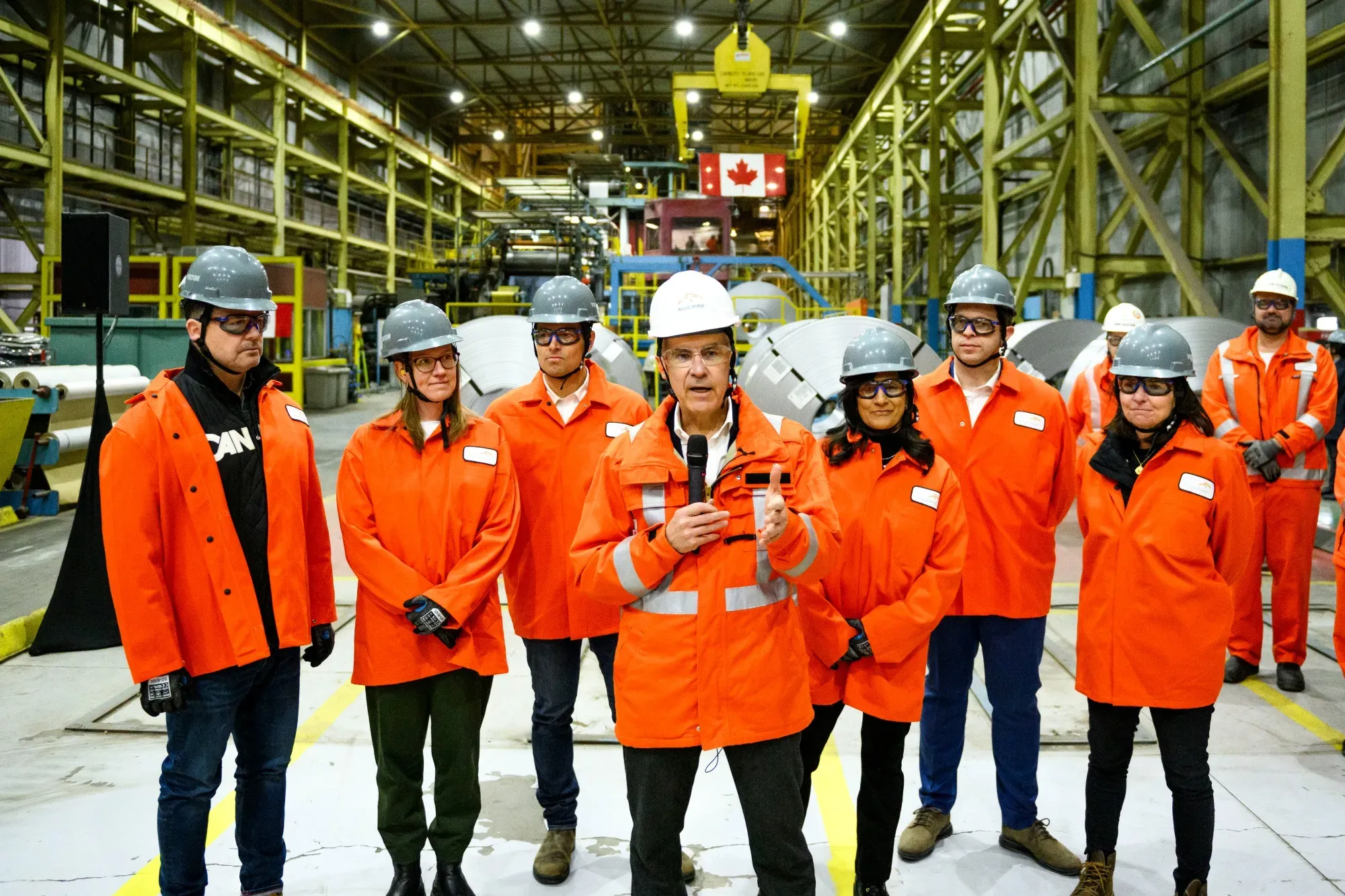Canada Adjusts Steel & Aluminum Tariffs: What This Means for Your Wallet in 2025

In 2025, Canada adjusts steel and aluminum tariffs in response to escalating trade tensions with the United States, a move that’s sending ripples through the economy.
Prime Minister Mark Carney announced on June 19, 2025, that counter-tariffs on U.S. steel and aluminum will be recalibrated by July 21, contingent on progress in trade negotiations with the Trump administration.
This strategic pivot aims to shield Canadian industries from the fallout of U.S. tariffs, which doubled to 50% in June, but it raises a critical question: how will these changes impact your finances?
From rising costs for everyday goods to potential job market shifts, the effects of this policy could touch every Canadian’s wallet.
Let’s unpack the implications with a clear-eyed look at what’s at stake, blending hard data with practical insights to understand the road ahead.
Canada’s decision is not just a domestic issue; it reflects a broader trend in international trade dynamics.
As countries around the world grapple with protectionist measures, the implications of Canada’s tariff adjustments could resonate beyond its borders, influencing global supply chains and trade relationships.
The Backstory: Why Canada Adjusts Steel and Aluminum Tariffs
The U.S.-Canada trade relationship, often likened to a tightly woven tapestry, is fraying at the edges.
In March 2025, the U.S. imposed 25% tariffs on Canadian steel and aluminum, citing national security under Section 232 of the Trade Expansion Act.
By June, President Donald Trump doubled these to 50%, a move Canada’s government called “unjustified” and “illegal.”
Ottawa retaliated with 25% counter-tariffs, but the latest adjustment signals a more aggressive stance.
If trade talks stall, Canada could hike these duties, aiming to protect its steel and aluminum sectors from being undercut by global overcapacity and diverted imports.
This isn’t just a policy tweak—it’s a high-stakes chess game with economic consequences.
Consider the broader context: Canada supplies about half of all aluminum used in the U.S., according to the Canadian Chamber of Commerce.
This makes Canada a linchpin in North American supply chains.
However, the U.S. tariffs have slashed Canadian exports, with the Canadian Steel Producers Association reporting layoffs and reduced investments since March.
The ripple effect?
Canadian manufacturers face higher costs, and consumers could see price hikes.
This is where the tariff adjustments come in, designed to stabilize domestic markets and prevent Canada from becoming a dumping ground for cheap foreign metals.
The geopolitical landscape is also shifting, as countries like China and Mexico watch Canada’s moves closely.
They may adjust their own trade strategies based on the outcomes of Canada-U.S. negotiations, potentially reshaping the global market for steel and aluminum.
How Tariffs Translate to Your Daily Expenses
When Canada adjusts steel and aluminum tariffs, the impact isn’t confined to factories—it seeps into your grocery cart, car payments, and home renovations.
Steel and aluminum are foundational to countless products, from canned goods to vehicles.
Higher tariffs on U.S. metals could drive up production costs for Canadian manufacturers, who may pass these expenses onto consumers.
For example, imagine Sarah, a small-town bakery owner in Ontario.
She relies on aluminum cans for packaging her specialty jams.
If her supplier raises prices due to tariff-driven cost increases, Sarah might need to charge more for her products, squeezing her customers’ budgets.
The numbers paint a stark picture.
A Boston Consulting Group (BCG) report estimates that doubling U.S. tariffs on steel and aluminum could inflate global tariff costs by $50 billion.
For Canadians, this could mean a 5-10% price increase for goods like appliances, construction materials, and vehicles by late 2025.
Here’s a breakdown of potential cost hikes:
| Product Category | Estimated Price Increase | Example Item |
|---|---|---|
| Automobiles | 5-8% | Mid-size SUV |
| Home Appliances | 6-10% | Refrigerator |
| Canned Goods | 3-5% | Soup cans |
| Construction Materials | 7-12% | Steel beams |
These figures reflect how deeply integrated steel and aluminum are in daily life.
Unlike a distant policy debate, this hits where it hurts—your wallet.
Additionally, consumers should be aware of the long-term implications of these tariff adjustments, as rising prices can lead to decreased spending in other areas of the economy.
This creates a cycle of inflation that can affect overall economic growth.
+ How to Build Good Credit as a Newcomer to Canada
The Job Market: A Double-Edged Sword
Tariffs are a shield for some and a sword for others.
Canada’s decision to adjust steel and aluminum tariffs aims to protect domestic producers, but the job market effects are complex.
On one hand, measures like new procurement rules favoring Canadian suppliers could bolster local steel and aluminum jobs.
By June 30, 2025, federal projects will prioritize domestic metals, potentially creating demand for workers at companies like Stelco or ArcelorMittal.
In Hamilton, Ontario, where ArcelorMittal recently laid off 153 workers due to U.S. tariffs, such policies could offer a lifeline.
On the flip side, higher tariffs could disrupt industries reliant on U.S. imports.
Take Mike, a construction worker in British Columbia.
His company uses U.S.-sourced aluminum for high-rise projects.
If tariffs spike, project costs could balloon, delaying construction and risking layoffs.
The Canadian Steel Producers Association warns that U.S. tariffs have already triggered a “freefall” in manufacturing, with April 2025 sales dropping 2.8% to $69.6 billion—the steepest decline since October 2023.
This volatility could destabilize jobs in related sectors like automotive and manufacturing, leaving workers in a precarious spot.
In a broader context, the job market’s response to these tariffs could influence public sentiment toward trade policies.
If workers feel threatened, it may lead to calls for more protectionist measures, further complicating international trade relations.

The Global Ripple: Canada as a Trade Battleground
Canada’s tariff adjustments aren’t just about the U.S.—they’re a response to global market dynamics.
With U.S. tariffs pushing cheap steel from Asia into Canada, the government is introducing 100% tariff quotas on non-free-trade-agreement countries, effective retroactively from 2024 levels.
This aims to curb “unfair trade practices” and stabilize prices.
But here’s the catch: what happens when global manufacturers redirect their excess supply to Canada?
It’s like a floodgate opening, threatening to drown local producers in a sea of subsidized imports.
This global dimension complicates the financial outlook.
Higher tariffs could insulate Canadian producers but also raise costs for industries dependent on imported metals.
The Aluminium Association of Canada praised the government’s tailored approach, noting that aluminum markets differ from steel and require specific measures, like tracking the “Country of Smelt and Cast” to prevent dumping.
Yet, as costs rise, businesses may cut corners elsewhere—think reduced R&D or fewer employee benefits—indirectly affecting your financial security.
Furthermore, the international response to Canada’s tariffs may provoke similar actions from other countries, leading to a potential trade war that could destabilize global markets.
++ Bank of Canada Interest Rate Decision: What June 2025 Means for Your Finances
Small Businesses and Consumers: The Hidden Victims
Small businesses, the backbone of Canada’s economy, face unique challenges when Canada adjusts steel and aluminum tariffs.
Unlike large corporations, they lack the resources to absorb cost increases.
For instance, a craft brewery in Nova Scotia might see aluminum can prices jump, forcing it to raise beer prices or cut production.
Governor Janet Mills of Maine noted similar struggles in the U.S., where craft brewers are grappling with higher costs.
In Canada, this could erode small business margins, leading to fewer jobs or closures.
Consumers aren’t immune either.
Higher prices for goods like cars or appliances could strain household budgets, especially for middle-class families.
Imagine choosing between a new fridge or a family vacation—tariff-driven price hikes force tough decisions.
Here’s a projected impact on household budgets:
| Household Item | Current Average Cost (CAD) | Projected Cost with Tariff Impact (CAD) |
|---|---|---|
| New Car | $45,000 | $47,250 – $48,600 |
| Refrigerator | $1,200 | $1,272 – $1,320 |
| Aluminum Ladder | $150 | $157 – $165 |
| Canned Beverages | $1.50 per can | $1.55 – $1.58 per can |
These increases might seem small individually, but they add up, especially for families already stretched thin by inflation.
Moreover, small businesses often create jobs and foster community engagement.
If they struggle or close due to rising costs, the impact on local economies can be significant, leading to a loss of community character and economic diversity.

The Trade Negotiation Wildcard
The 30-day trade talk window, set to end July 21, 2025, is a make-or-break moment.
If Canada and the U.S. strike a deal, tariffs could stabilize, easing pressure on consumers.
At the G7 Summit in Alberta, both Carney and Trump expressed optimism about a resolution.
But if talks falter, Canada adjusts steel and aluminum tariffs upward, potentially sparking a tit-for-tat escalation.
An X post by @AlvaApp warned that this could spike input costs for manufacturers, fueling inflation across North America.
The uncertainty is palpable—will your next car purchase cost thousands more because of a stalled deal?
This uncertainty underscores the need for agility.
Canada’s $10 billion Large Enterprise Tariff Loan facility offers liquidity to struggling businesses, but it’s a bandage on a deeper wound.
Without a trade agreement, the economic fallout could mirror April’s manufacturing crash, where factory orders contracted sharply.
The government’s task forces for steel and aluminum will monitor markets, but their recommendations may come too late to soften the blow for consumers.
The outcome of these negotiations could also influence future trade agreements, shaping the landscape of international commerce for years to come.
Policymakers must tread carefully to ensure that economic stability is prioritized while also addressing the concerns of domestic industries.
A Balancing Act: Protection vs. Prosperity
Protecting Canadian industries is a noble goal, but at what cost?
When Canada adjusts steel and aluminum tariffs, it’s walking a tightrope between safeguarding jobs and inflating living costs.
The government’s measures—like favoring local suppliers and imposing anti-dumping quotas—aim to fortify the economy.
Yet, higher tariffs risk alienating the U.S., Canada’s largest trading partner, and could invite retaliatory measures.
It’s a high-stakes gamble, akin to betting your savings on a single stock—potentially rewarding, but fraught with risk.
For consumers, the immediate concern is financial.
A 5-10% price hike on everyday goods could erode purchasing power, especially for low- and middle-income households.
Small businesses, meanwhile, face a squeeze that could stifle growth.
The government’s promise to funnel tariff revenue into supporting affected businesses is a start, but without clear details, it’s hard to gauge its impact.
What’s clear is that Canada adjusts steel and aluminum tariffs not just to protect industries but to assert economic sovereignty in a turbulent global market.
As policymakers navigate this complex landscape, they must consider both short-term and long-term consequences, ensuring that the needs of consumers and businesses are balanced effectively.
For more insights on trade policies and their implications, check out The Globe and Mail, which provides in-depth coverage of economic issues affecting Canadians.
Looking Ahead: Navigating the Tariff Terrain
As Canada adjusts steel and aluminum tariffs, the path forward demands vigilance.
Consumers can brace for higher prices by budgeting smarter—perhaps opting for used cars or delaying big-ticket purchases.
Businesses, especially small ones, should explore local suppliers to mitigate import costs.
Policymakers must balance protectionism with diplomacy to avoid a trade war that could cripple both economies.
The 30-day negotiation window is a chance to rewrite the script, but it’s no guarantee of relief.
In this complex dance of trade and tariffs, your wallet is on the front line.
Whether it’s pricier groceries or a tighter job market, the effects of Canada adjusting steel and aluminum tariffs will linger into 2025.
The question isn’t just how much more you’ll pay—it’s whether Canada can navigate this storm without capsizing its economic ship.
This ongoing situation will require all stakeholders to be proactive, ensuring that they adapt to the changing landscape while advocating for fair trade practices that benefit everyone involved.
